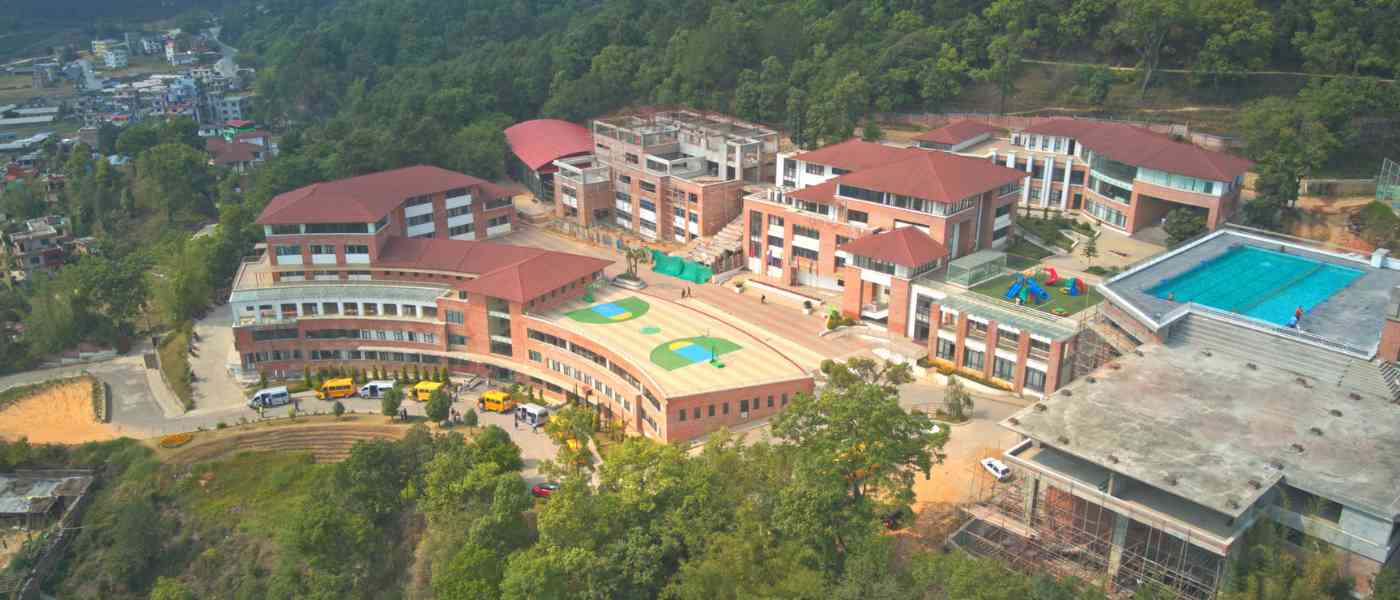Education for sustainable development would therefore become crucial to building eco-friendly schools. While schools can introduce the values of stewardship in young minds from a very early stage, much can be done to reduce their environmental impact while they teach students to care for Mother Earth through the curriculum, infrastructure, and daily practices. It means more than education in the classical sense: practical projects, community involvement, and green policies developing a culture of sustainability. Every face of the school's operations, from energy-efficient buildings to reducing waste and promoting sustainable transportation, can contribute to creating a healthier environment. Schools set prime examples by engaging the young minds towards green practices beyond the class walls and by assisting in raising a generation in service of saving our planet.
Kathmandu World School integrates issues of integrity, compassion, respect, responsibility, dynamism, and cooperation within environmental education to help achieve an overall sustainable approach. Integrity provides students with a foundation to make honest, informed choices for the betterment of the planet and to show responsible work on such issues as environment reduction, energy conservation and justice. It is developed through understanding and compassion for all life, cleanups within the community, and support for the disadvantaged communities since environmental degradation most often affects this zone. Respect towards diversity is underscored by the study of biodiversity, cultural practices and indigenous ecological knowledge that raises awareness about the interlinkages between nature and human society. It focuses on responsibility, making students make wise decisions concerning the environment by owning up to their actions and instilling others with the spirit of creating a sustainable school environment. Dynamism is encouraged by the developing culture of inquiry and innovativeness, thereby giving a chance for students to experiment with new technologies and concepts in protection of the environment. It all requires cooperation: between students, teachers and the community via shared activities, recycling programs, and partnerships with local organizations on the way toward the achievement of broader sustainability goals and building a culture of environmental responsibility.
Under such values, Kathmandu World School has engaged in many projects that make the commitments to sustainability and educational excellence very clear. One typical creative example of recycling is theTyre Bin Project, which reuses old tires to produce useful bins in school; this reduces waste and learns or spreads environmental awareness among the students.Homebiogas system is Installed in the school, a small-scale biogas unit called the Homebiogas system converts cafeteria organic waste and other organic sources into clean cooking gas and liquid fertilizer, thus showing that waste management and renewable energy go hand in hand for sustainable development and getting hands-on learning experiences.
The KWS Robotics Event makes it an active platform for students to discover and show their skills in robotics through competitions, workshops and exhibitions. Competitions foster innovation and creativity in technology and engineering. Such projects improve not only the environment of the school but also the educational experience for learners.
Many proposed projects towards sustainability and environmental stewardship have been put forward at Kathmandu World School but not yet implemented. One such initiative is that ofÂ
Saafa Paani: access to clean drinking water through an innovative tower system consisting of stacked 2-liter PET bottles fitted with a trekking-grade filter for the assurance of water purity. Another proposed initiative is hydroponics: growing plants without soil in nutrient-rich water. This can realize the dream of sustainable agriculture in most urban settings.Â
On the other hand, the Energy-Free Water Pump which uses atmospheric pressure and plumbing tubes to pump water without using any electricity, making it a worthy solution in some areas of school with inadequate electricity supply.
Future plans include a 67 kW Solar Plant, which shall of course further bring down the carbon footprint of the school, and a TEDx Talk on Environment where awareness shall be spread to practice sustainable deed through expert inputs.
The Green Tiger Club is planned as a student-led effort for environmental protection, including activities such as clean-up drives and workshops, however it is now in the planning stages.
Finally, the   project is aimed at developing an effective system that can help reduce boring water contamination until the time the issues involved are well understood.
Kathmandu World School integrates such ideals and projects into its environmental education program in an attempt to create a completely eco-friendly learning environment. This effort will not only be good for the environment but will also contribute towards shaping the personalities of the learners and make them responsible, caring, dynamic leaders in the global community.


.jpg)